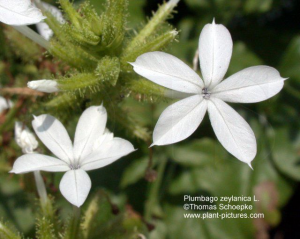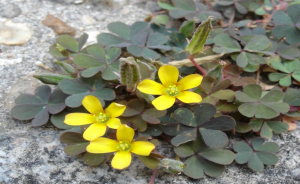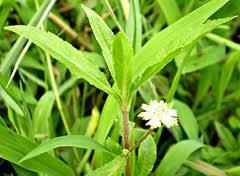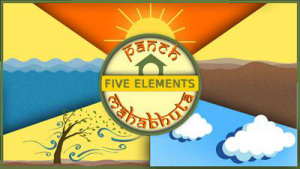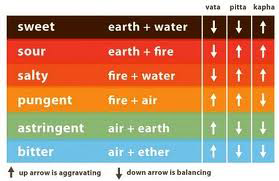Table of Contents
Datura
Dattura metel Linn – Ayurvedic Herb
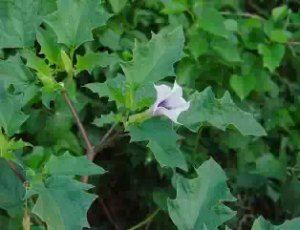
LITERARY REVIEW
- It is found in panini’s works.
- Soumaka quoted ‘kanaknaka’ as a poisonous plant which is equated to datura (sou. 10/04/12).
- Charaka delimated in the contest of visha chikitsa and in kustha chikitsa (madhasava).
- Sushrutha indicated it especially for alarka visha (raibus).
- Charaka described it only merice in the name ‘kanaka’ (e.s.chi 1/74 &23/78).
- Some are of the opinion, his plant may be nagakeshara since no other synonyms/ description about dhattura is available in charaka Samhita apart from the above mentioning’s.
- Sushrutha described it a ummatta twice, dhattura thrice. (s.s.ka 7/54, s.s.ut 21/6) (s.s.ci77, s.s ka7/52 &53)
- Vagbhatta quoted it twice each as dhattura (A.H at 24/30 & 38/37) & kanaka 9A.h at 32/31& 39/18).
- Harita Samhita has indicated it for arsas.
- Nighantu’s have highlighted its therapeutic usage in respiratory disorders and other conditions.
SYNONYMS AND INTERPRETATION
- Dhattura/ Dhurtha : it depletes the dhatu of the body.
- Unmatha: that which causes intoxication
- Kankaahrya: All the synonyms of gold is used for this plant
- Devatha: that which is having divine quality.
- Kithava: makes a person mad.
- Thuri: the flowers have the shape of trumpet.
- Mahamohi: causes severe hallucinations.
- Shivapriya: favorite flowers of lord Shiva/ flowers are used to worship Lord Shiva.
- Maatul: it is highly toxic.
- Tripushpa: flower appearing 3 together
- Kantphal: fruits having spines on it.
- Khwarjugna: removes itching sensation on external application.
- Kanak: seeds are yellow in color.
- Vyalaha: it is fatal to some animals.
- Ghantapushpa: the flowers are funnel shaped.
- Thalphal: the fruits will be hanging downwards.
- Dhastur: it improves complexion and appetites and kills microbes and acts as wound healing also.
- Matulaputraka: matula means dattura; its fruits are considered as its son.
Bheda (Varieties)
- Usually there are 2 varieties of Dhattura i.e. surtha and Krishna which are dhattura stramonium and dhattura metels respectively.
- According to raja nighantu- 5 varieties are mentioned depending on the color of the flowers as surtha, mila, rakta, pita and Krishna.
- He mentions that Krishna is the best variety.
- Makurji quoted that dhattura stramonium is the Krishna dhattura owing to its seed color.
- Dhanvanthari nighantu- no color.
Botanically the following species are identified.
- Dhattura stramonium
- Dhattura metel
- Dhattura inoxia, which are having similar features of dhattura for this might have been taken up as dhattura variety in Raja nighantu.
Regarding the properties there is no much difference.
Dhattura metel regarded as the most poisonous of all species.
Vernacular names
- English – Thorn apple, downy datura
- Hindi – Dhattura, Sada Dhatura
- Kannada – Datturi, ummatta
- Malayalam – Ummam
- Telugu – ummtha.
- Tamil – Umattai, Ummattangai, Vella-Ummathai
- Bengali – Dhatura
- Gujarati and Marathi – Dhattura
OFFICINAL PART
- Root
- Fruit
- Seed
- Flower
- Leaf
- Root.
DOSE
- Patra churna- 0.5-1mg.
- Beeja churna – 50-100mg.
- Dhoomapana – 0.3-1gm.
CHEMICAL COMPOSITION
- Alkaloids- tropane alkaloids, hyoscyanine and fixed oil.
- Leaves – poisonous alkaloid – dhetturine, uncilage albumen and ash.
- Seeds- active principles dhaturine, resin, mucilage, proteins , malic acid, scopolamine, dhaturadial, dhaturalone, tropine , psuedotropine, apoatropine, dhatuuranetalin A and B.
CHEMICAL TEST
Seed dhatura is a tropine alkaloid tropane it gives positive vitali morine reaction. In this test the treated with fuming nitric acid and 5ml of a 3% (w/v) solution of koH in methanol is added. It gives a distinct violet colour.
The drug also gives a yellow precipitate with silver nitrate solution. The precipitate formed in insoluble in nitric acid but soluble in ammonia.
PROPERITIES
- Rasa – Tikta, katu, Kashaya, Madhura.
- Guna- teekshna, ruksha, guru, (laghu)
- Veerya – ushna.
- Vipaka – katu.
- Dhosakarma – kapha vata shamaka.
ACTIONS
- Vishagana
- Kasahara
- Jawarahara
- Kushtapra
- Maduka
- Varunya
- Vatakaraka
- Krimigra
- Vedanasthapana
- Sanujuanasaka
- Jataragnivaradaka
- Shoolaprashamana
INDICATIONS
- Jwara.
- Kushta.
- Yukaliksa.
- Vrana.
- Kandu.
- Krimi.
- Visharoga.
- Mutra krucra.
- Tamaka swasa.
- Adhamana.
- Aladisula.
- Amavala.
- Sandhisotha.
- Vrukka sula.
- Unmada.
- Dhanurvata.
- Talasantrasa.
THERAPEUTIC ACTION
- Alarka visha – dhattura and swetha Punarnava combination is a very effective remedy (Sushrutha Samhita ka-7).
- krimi- juice of dhattura leaves mixed with mercury / juice of heated leaves simply destroys ticks and lice on local application.
- Pitakamaya- juice of mandhukaparvi and paste of dhattura root destroys the boils.
- Bija is given in the method of pippali vardhamana (vangsen).
- Umuadhra – patra cooked in milk and ghee (chakra dhatta).
- Dog bite – patra swarasa and milk with ghee and jaggery.
- Pidika – moola is rubbed and applied( shoodhala)
- Alopenia – the nearly vein should be punctured and the surface is scarified deeply and pasted with juice of dhattura leaves (A-H).
- Thamaka svasa – the leaves as used dhuwarapana in tamakasvasa.
- In jvara which comes frequently is given with curds.
- In udharashoola pitta swarisula and urukasula it is given to relieve the pain.
- In sothra a paste of leaves is applied.
- It reduce the swelling and pain.
- In audasotha, awuavata, saudhisotha, adhwaua, puppsavarauasotha, uadisula, grdhrasi etc. fermentation given with kwakltra of the leave, patra is bound as the part / an oil is applied on the part.
- the oil is prepared with the leaves used externally in charma roga and vata vyadi.
- It is mainly used as CNS stimulant.
- It is also finds application in motion sickness.
- It is also an important part of preoperative indication.
- It is also used in opthalomic case for dilating the eye pupil.
FORMULATIONS
- Kavakasava.
- Sutasekhara rasa
- Umaltha rasa
- Maha visha garbha taila.
- Kamaka taila
- Kamaka lepa
- Kamakasundara rasa
- Twarankusarasa
- Lakshmivilasa rasa.
SUBSTITUTES AND ADULTERANTS
- Dhattura innoxia hill – a more commonly growing species is the main adulterant.
- More often it constitutes of exclusive component of commercial samples.
- This materials differ from genuine drug is having hairy leaves and steuss of dirty green colour , long tender spines covering the fruits and an having lobed white corolla.
- Kaladhattura seeds are sometimes compounded with the seeds of dhattura stromonium especially when sold under the name of pharmaceutical term stromonium .
SHODHANA KARMA (purification)
- The seeds are purified in dola yantra with ksira.
VISHALA KASHMA (TOXIC SEPUPTOUS)
On excessive dose causes depress of the throat, giddiness, fleshing of the face, construction of the pupil, unconsciousness and death.
VISHA CHIKITsA (Rx)
- Vamana should be done by amavaysa pracalana, uttejaka medicines should be given. Cold water should be sprinkled on the face.
- Artificial respiration should be given keera, ghee should be given with sugar.
- Karpasapancaka kwatha guduci jambira swarasa should be given.
- Butter milk also can be given.
ANTIDOTE
Mixture of swetha poornava ½ tola i.e 5gm dhattura root 4 gunja (500mg) in cold water and milk should be given in rabies.
RESEARCH STUDIES
- Alcoholic extract of whole plant of dhattura metel showed authelmentic activity against ascardia galli.
- It also possessed anti-cancer activity against human epidermal carcinoma of the meso pharynx in tissue culture.
- The alcoholic extract of the entire plant of dhattura auerifolia should hypoglycemic activity in albino rats.
- The alcoholic extract of the fruits of the same plant should authelementic activity against ascardia galli.
- Dhattura metel- scopolamine disrupted regulation of local blood flow in brain and altered basal fame of cerebral piat artery system in rates.
- Scopolamine was effective against experimental cardiac aurtythymias induced in mice – rats rabbits and guiena pigs.
- Dhattura metel- chromic administration of seed extract to rat increased brain lipid peroxidase and catalase activities and decreased fructose diphosphte aldose and glucose-6-phosphate dihydrogenase activities.
- Scopolamine obtained from D immoxia given i.v in man mainly inpairs acquisition of new information but has less effect on retrival of information.
- Atropine, gyoscine and total alkaloids obtained from datura metel caused 9,147 and 15.2%. inhibition of MAO and 8,9.3 and 8.9%. inbhition of 5-HTP decaroxylase respectively.
- In an experimental study with datura metel – an increase in locomotor activity produced by morphine HCI was inhibited by pretreatment with atropine, methylatropine, scopolamine or muthoscopalamine, hyperactivity induced by methamphetamine HCl, caffine / cocaine HCl was augranted by atropine/ scopolamine.
FOLKORE USES
Traditional medicinal uses include placing a folded leaf behind the clear to allow motion sickness / applying a fresh leaf.
The undried fruits are used to produce the heaemophatic




